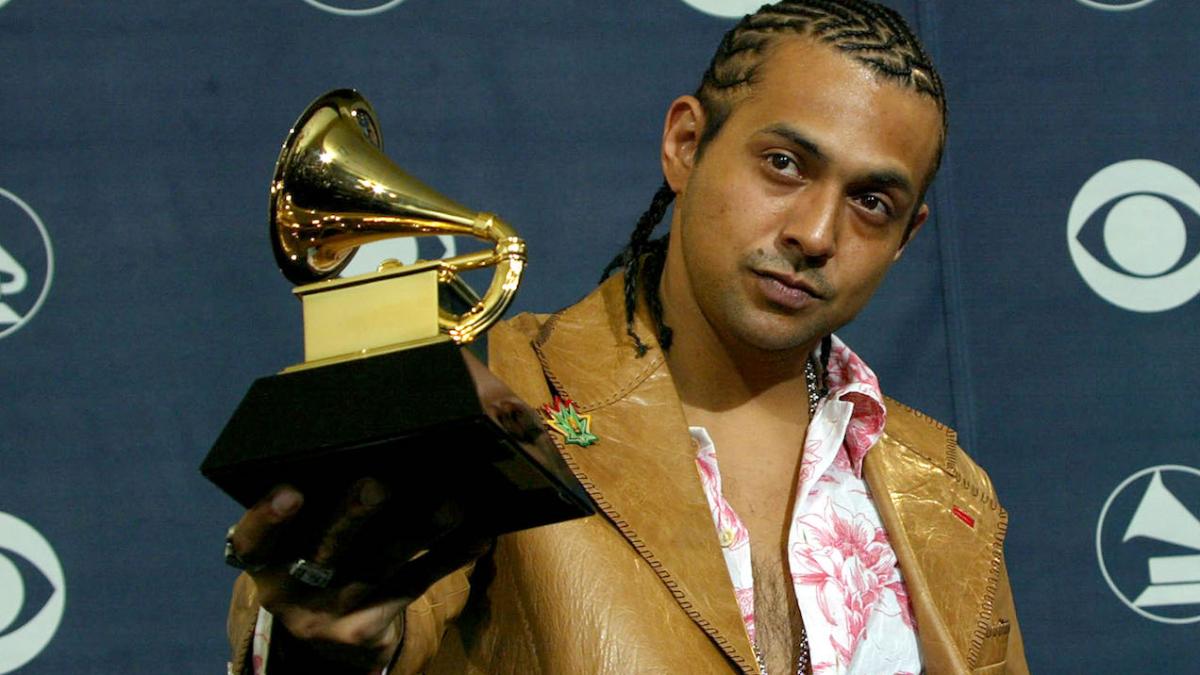
We met again in 2018.
It had been a normal gym session until then. I was between sets, fiddling on my phone, clutching a set of dead Bluetooth earphones. Flatscreen TVs beamed music videos on the walls, and pop tunes – pumping, endless – burst from the bank of treadmills. Two voices carried through the room. Hers was unfamiliar, a lithe note holding its own between pounding footsteps and stifled pants. But his voice, all staccato vowels, the monotone rat-a-tat underneath it all? How could you mistake it?
Not here, I thought. Not now. But it was. How could it be anyone else?
I looked to one of the screens. It was Sean Paul, strutting in a fur-collared coat in the music video for No Lie, his hit single with Dua Lipa. It sounded good. He was back.
It took me a while to learn the error of that sweat-drenched assessment. Sean Paul, the Jamaican dancehall legend, wasn’t really “back”. He didn’t disappear for the long decade after dropping Get Busy and Temperature, shunned by a pop industry tired of his unique talents. He didn’t go anywhere. No Lie, and its accompanying EP Mad Love the Prequel, was no gasping attempt to reclaim former fame.
Sean Paul never left. We left him, and it took us too long to realise.
Pop music travels in cycles, churning through trends and picking up nostalgic references in startlingly predictable ways. By 2007, it was time for mainstream pop to ditch the lingering warmth of big-budget production for sharper, harsher, colder tones. Rihanna demonstrates this maxim pretty well, I think, and not just because of her early collaborations with Sean Paul. The Barbadian singer leaned heavily on Caribbean tones in her debut LP, 2005’s Music Of The Sun, and lead single, Pon De Replay, has its title plucked from Bajan Creole. The contrast between Music Of The Sun and Good Girl Gone Bad, released just two years later, is striking: mega-smash Umbrella, the song which cast her as a ‘serious’ pop artist, is all synth stabs and hip-hop percussion. Besides a few distorted examples – 2009’s Rude Boy comes to mind – the sway was gone.
The pop cycle rolled ahead. Alongside Rihanna, a young Lady Gaga was tipped as the future of the genre, and her brand of abrasive four-on-the-floor filled clubs with snarling synths and not a huge deal else. Katy Perry, Kesha, and the acolytes of Dr. Luke would come to own the sound, leaving little space for anything less than pure vocal bombast (Adele, Beyoncé) or the country crossover kid called Taylor Swift.
You may be wondering what this has to do with Sean Paul, but consider this: where, in that maelstrom of blown-out bass, did you hear his voice? Where would it have fit? Where could it? Got 2 Luv U, his 2011 track with Alexis Jordan, pits his vocals against the sharp synth pads of the era. It’s a battle his flow doesn’t win. Sean Paul never stopped releasing albums, with the majority copping Grammy nominations for Best Reggae Album, but his cut-through in suburban Australia – obviously, the epicentre of all art – had dwindled.
But away from the absolute top of the charts, a cadre of tastemakers concentrated on bringing Latin and Afro-Cuban rhythms to new audiences. Jamaican-American banger merchants Major Lazer gave vocalists the chance to experiment with a grab-bag of reggae, dancehall, and moombahton beats, yielding surprising collaborations (after all this time, I can’t believe Amber Coffman‘s crystalline, indie-honed voice landed on Major Lazer’s perfect Lean On). It wasn’t too long before Sean Paul leapt onto one of their tracks, and 2014’s Come On To Me still sounds fresher than his simultaneous solo output.
So the edges of 2010s pop began to fray. Perry’s star faded, ever so slightly. Lady Gaga adopted a more organic sound, hiding the blinding production of The Fame under Joanne‘s new cowboy hat. Major Lazer’s Diplo grew in stature as a solo producer, embedding Justin Bieber’s comeback record Purpose with Latin-inspired rhythms. Oh, Rihanna also said “fuck it” and dropped Work, her most rhythmically-intricate song in years, and dragged Jamaican patois enthusiast Drake along with her.
“A lot of pop artists nowadays, such as Rihanna and even Drake, they started to do music that reflects a lot of influence of what dancehall has given to the world,” Paul told Music Connection last year.
They were not the only ones. At the same time as Latin pop crushed into the English-speaking mainstream with Luis Fonsi‘s little song called Despacito ft. Justin Bieber, major acts adopted the staggered snare hits found in Latin and Afro-Cuban beats. Even Ed Sheeran, ginger troubadour, rounded off those edges with Shape Of You.
Sean Paul was there the whole time. I just didn’t see him.
“That’s a proud moment in time, in terms of a lot of people are turning their heads and saying, “How come everything sounds like this?” That’s the influence of dancehall,” Paul said. It’s an influence he carries in latter-day hits No Lie, or last year’s link up with J. Balvin, Contra La Pared.
I don’t know what the next cycle will kick up, what rhythms will prevail, or what overlooked styles will melt into the Western pop canon. But Sean Paul will be there, on the stage, beaming from gym TVs, in the club. He will be swaying, vibing, waiting for us to catch up.



